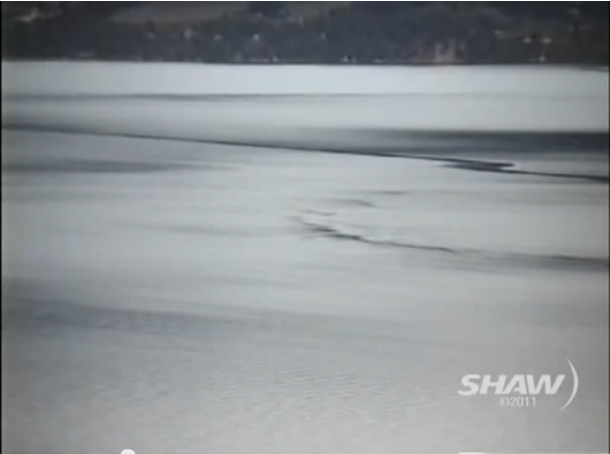

A suggested explanation for surface effects recorded on Okanagan Lake near Kelowna, British Columbia, Canada
on 19/May/1987 by Mr John Kirk.

A representative still frame from the video. See modern view at bottom of page
INTRODUCTION
On 19/05/1987 at about 2030 hrs Mr John Kirk and others were observing the surface of Okanagan Lake from a location at or near the summit of Mission Hill, West Kelowna when a surface disturbance was noticed and filmed in the general direct of Mission Creek, approximately 6 km away. The photographer refers to this as "my video of Ogopogo in 1987" (ref 1).
The video itself can be viewed as part of an interview uploaded to YouTube on 1/March/2011 at
http://www.youtube.com/watch?v=7zxS-zKe89o and the relevant part of the video starts at 1 min 55 sec.
The female interviewer asks "isn't that like a current..." and Mr Kirk discounts the suggestion (time 2'.05") commenting "no it isn't a current because it is dead calm down there on the lake".
PURPOSE
Mr purpose is to show that the area of the lake shown in the video is subject to several different dynamic processes which could be termed currents, various combinations of which could account for the surface effects shown in the video, and the assertion that a large unknown animal can be seen is unsupported by the evidence.
COMMENT
Firstly, astute observers will already have noticed that it is clearly not dead calm on the water surface - there are distinct waves visible in the foreground and various ripple patterns elsewhere, and, secondly it is quite possible to have currents within a lake without any waves on the surface - the two features are not related but here we have both.
Known processes in Okanagan Lake
The various processes likely to be found near Kelowna are very clearly explained and graphically illustrated in a scientific report produced by Larratt Aquatic Consulting Ltd titled "District of Lake Country Source to Tap Assessment of Okanagan Lake Intake - July 2010" (ref 2) in connection with a water supply project . Relevant diagrams and explanations from within the 70-page document are presented below to describe four of these important ingredients.
These are
1 - the bottom profile of the lake showing the prominent sill near Kelowna which causes turbulence in the water passing over it
2 - inflow plumes created as water of different density enters from Mission Creek etc and takes time to mix with the lake water
3 - municipal outfall plumes from water treatment facilities which rise upwards from deep discharge pipes
4 - seiches which disturb and distort features 2 & 3 above.
I show screenshots of the parts of the Larratt document illustrate my points.
1 Bottom profile.
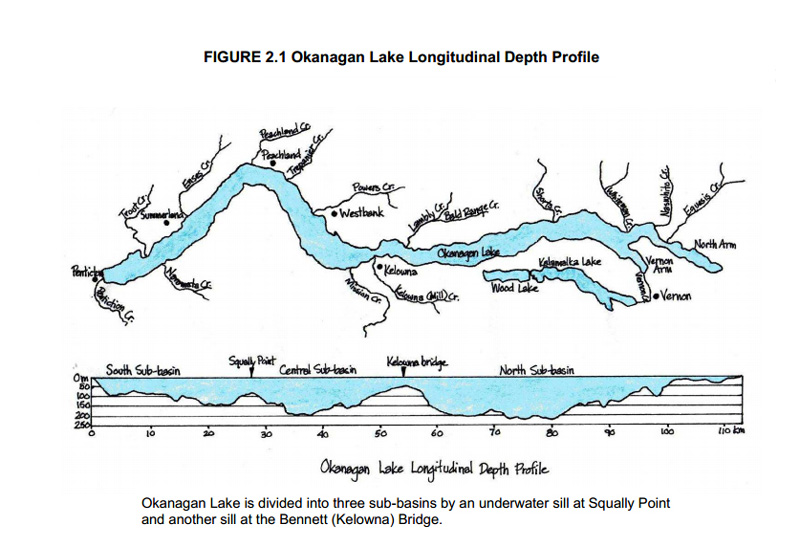
(From Fig 2.1 page 9)
2 Inflow plumes
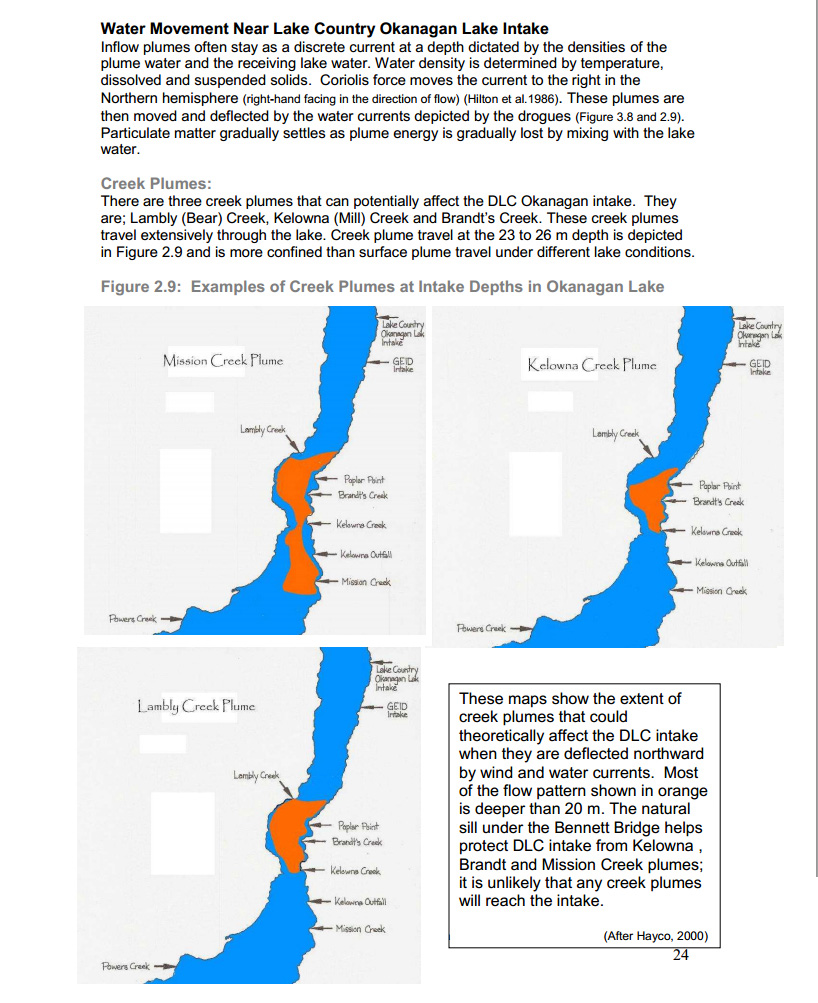
(from Fig 2.9, page 24)
3 Outfall plumes
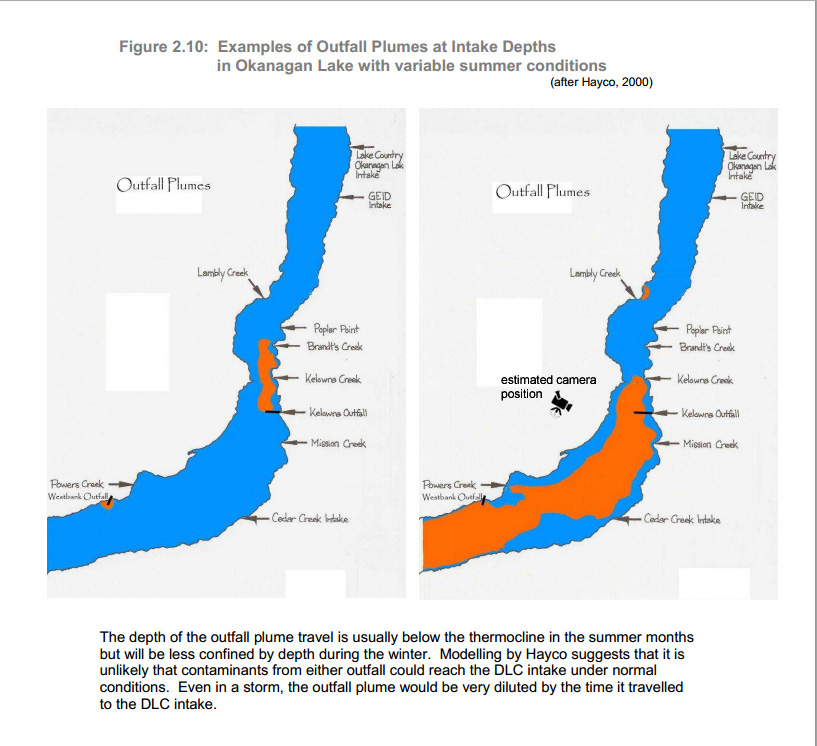
(from Fig 2.10, p26)
4 Seiches
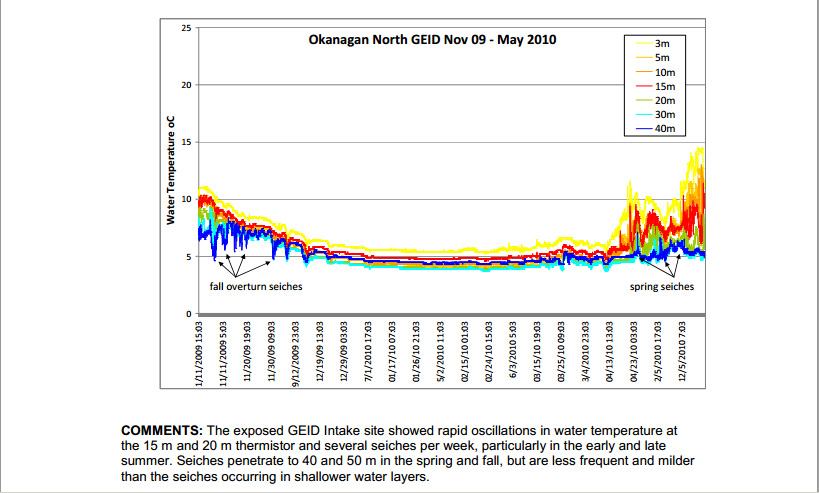
(from Fig 2.5, p 15) Note seiches recorded in late April.
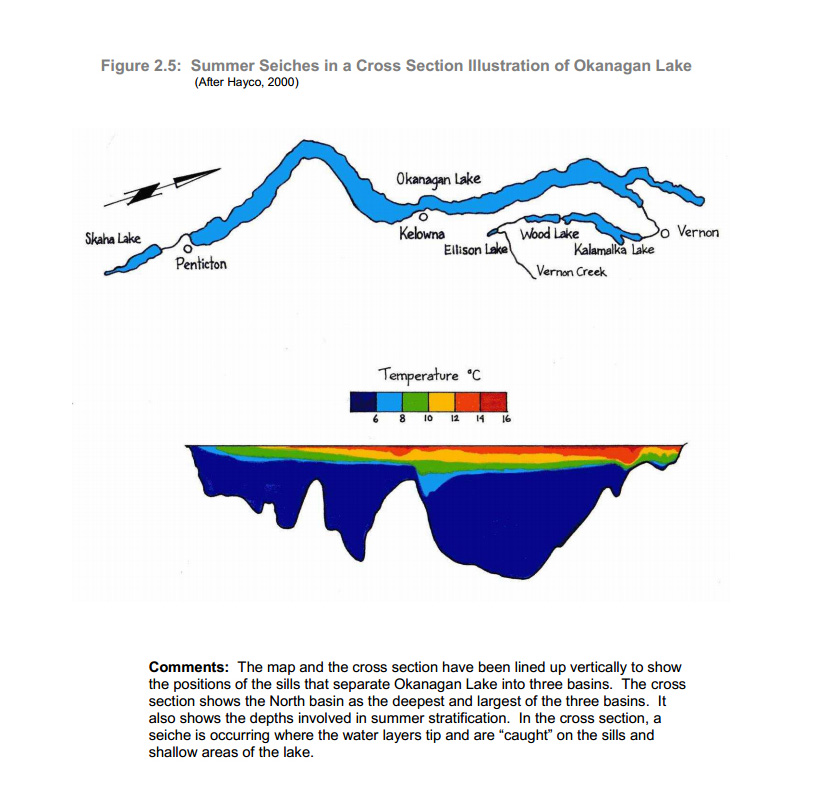
(from Fig 2.5, p 17) The sill at Kelowna causes turbulence in the water layers.
The water from creek and outfall plumes will usually be of a different temperature to the lake water and will also contain varying amounts of surfactants, substances which change the surface tension of the water. Surfactants are also emitted by boat engines. Areas of surface water will therefore have varying surface tension and varying tendency to suppress ripples generated by a light breeze. Where the rippling forces are suppressed, the water remains mirror-like and reflects the distant view making the water dark or light in what physicists call specular reflection, but where the ripples survive the water behaves like a collection of tiny mirrors at many different angles and produces diffuse reflection - a mixture of all the tones in the sky and surroundings, often turning out grey.
The weather records for 19th May 1987 from Weather Underground are shown below.
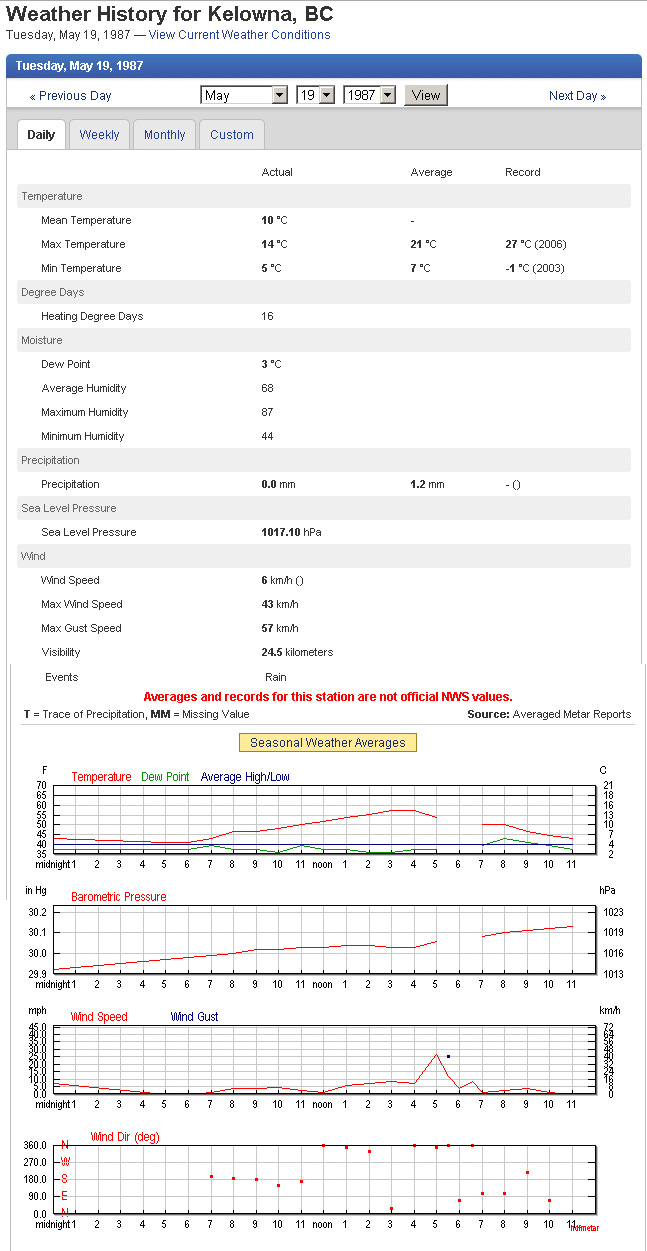
The summary for the day would appear to be a southerly breeze in the morning changing to northerly in the afternoon with a brief squally period between 1600 and 1800 (possibly including the rain mentioned in the record) leading to light easterly airs at the stated time of the filming.
Given the documented variety of processes occurring within Okanagan Lake at this location I suggest that the video shows a water surface having gradually changing patches and bands of specular and diffuse reflection, rather than a large unknown creature rising to the surface and sinking again. I do not claim that such creatures do not exist, I only suggest that the video taken on 19th May 1987 has the more mundane explanation described here.
I am very pleased to have found the excellent diagrams and information created by Larrat Aquatic Consulting Ltd on the Internet, but the company is in no way associated with the claims in this document beyond being one source of the material which I have used to illustrate them.
Dick Raynor
Inverness, 30th January 2014.
Updated 8th February 2014.
ref 1 - https://www.facebook.com/pages/Lake-Monsters/537100722991730?ref=br_tf
ref 2 - Larratt Aquatic Consulting Ltd titled "District of Lake Country Source to Tap Assessment of Okanagan Lake Intake - July 2010
For a simple explanation of specular and diffuse reflection see http://www.physicsclassroom.com/class/refln/u13l1d.cfm

Above is the frame from the 1987 video, below is a view from a nearby location in 2013
which shows similar surface effects.
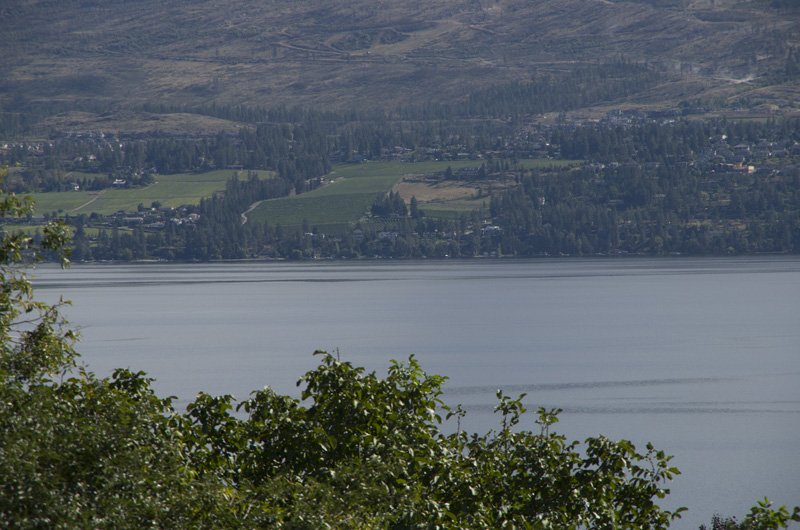
Photo copyright Adrian Shine 2013